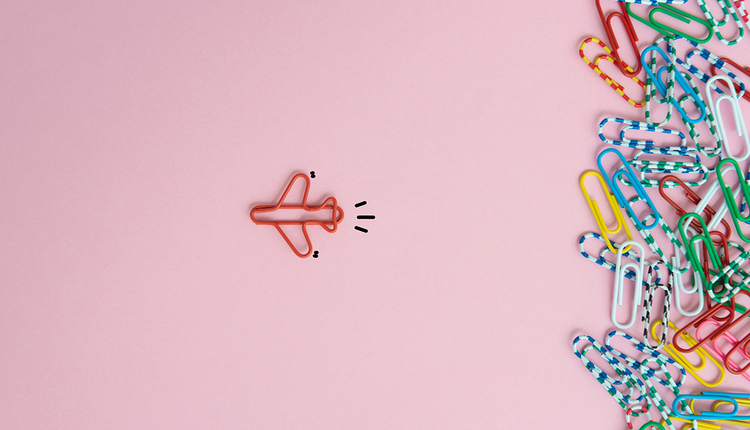Working as an inside sales representative, one of my tasks is to work with prospective clients who contact me through my company’s website. As I ask questions to see what their experience has been using direct mail, I often get the response that direct mail didn’t get the results they hoped for. At this point I ask to see if I can look at a previous mail piece, and I ask about who the mail piece was sent to. I am then able to ask questions regarding what they were trying to accomplish, and what the actual results were. I will then go through each aspect of the mail piece and provide advice as to what works, what doesn’t work, and how personalization can increase response rates.
I am going to start out with what doesn’t work as I like to end my articles on a positive note. One of the most common mistakes that will cause a mail piece not to work is an unclear message. If I look at a mail piece and I am not able to figure out what the message is in three seconds or less, it is a poorly designed mailer. A mail piece must have a clear, concise message the grabs the addressee’s attention.
A direct mail piece without a compelling offer and a call to action just doesn’t work. If the addressee is not given a large enough discount, they have no reason to respond. People are too busy for an offer of five percent on a $50.00 item. If you are going to the effort to design a mail piece, print it, mail it, and pay the postage, make the discount worth the addressee’s time. Be sure to have a call to action. Use terms such as “Limited Time Offer,” “First 100 Responses Receive This Offer,” or “Time is Running Out” to drive an immediate response.
Along with your offer, you need to make it easy for the addressee to respond. Try using a QR code that points to a landing page on your website, and ensure your website is mobile optimized so orders can be placed immediately. Be sure your address and phone number are easy to find on the mailer and make them large enough for people to spot quickly. If you are a new business and are looking to drive people to a brick-and-mortar store, place a map on the mail piece showing your location.
The design of a mail piece will also help dictate if the mailer works or not. When designing a mail piece, design it to appeal to your senses. Use coatings, such as soft touch or a textured coating, to give the piece a special feel to make people want to hold on to your offer. The color of the mail piece can also make a difference. Try using a pastel color of paper to draw attention. Colorful inks and die cuts appeal to sight. Use a scented ink to draw people closer to your mail piece. Make your mail piece interactive by using specialty folds or pull-out panels. Get the addressee involved with manipulating your mailer. The United States Postal Service will be running the Tactile, Sensory and Interactive Engagement promotion starting on February 1, 2024, and running through July 31, 2024. All these techniques would qualify for the promotion.
Who Is Receiving These Mail Pieces?
The last item that is critically important is your mailing list. If you don’t have the right list, your mailing will not work. Long gone are the days of sending out 100,000 pieces of mail to an area regardless of what you’re selling or who your current customers are, unless you’re a service provider or restaurant. A clean list targeting addresses who fit your current customer profile drives down costs and increases response rates.
A good mailing list will be a targeted mailing list. Use demographics to target the consumers most likely to respond to your offer. A few of the demographics that can help target a specific audience include age, income, homeowners, renters, presence of children, single family dwelling units, multi-family dwelling units, and net worth. These are just a few of the consumer demographics available. There is still a time and place for a saturation list for hitting everyone in a specific ZIP Codes or carrier routes. This works well for mailing items such as menus and coupons for services such as auto repair or haircuts. New doctor, dentist, and veterinarian clinics also benefit from the use of saturation lists. I suggest going with a larger mail piece and sending out using Every Door Direct Mail when doing saturation mailings. The larger mail piece sticks out in a stack of mail and gets noticed.
The Power of Personalization
Personalizing your mail piece to your addressee is the best way to get the highest response rates. People love to see their name placed on a mail piece they receive. Personalization works for letter packages, self-mailers, and post cards.
Personalizing both sides of a postcard ensures that when the mail piece is picked up the addressee will see their name no matter what side of the card is facing up. One side will have the address block, and the other side can have a personalized message or a picture of a sign, hat, t-shirt, or sweatshirt with their name on it. Use an oversized postcard and don’t forget to include your QR code for easy ordering.
A folded self-mailer allows you extra room to personalize a story for the addressee. Drop in a name and address. Also add in other personal information such as if they are a homeowner or drive a specific vehicle. Do they own a boat or vacation home? You can personalize both the mail piece and your offer to the customer/prospect.
Finally, a letter package can allow you to personalize the outer envelope, a cover letter, an order form, and a donation slip. Be sure to include a reply envelope to increase your returns. Personalize the cover letter with a salutation, drop in personal information regarding previous orders or donations, and add in a personalized request. Personalize the order form and donation slip so the addressee does not need to do so. This makes it easier for them to fill out the forms and it makes it easier to read responses. Print the donor card and order forms on color paper to add appeal to the letter package. Match the components together to the outer envelope. When addressing the outer envelope, use an ink color other than black, try a handwritten font, and add a real stamp rather than an indicia to help get your mail piece opened. It is critical that all the components are matched together correctly, as a mix-up can lead to disaster.
I was told many years ago by an older colleague that a great mail campaign is 30% Offer, 30% Design, and 40% the Mailing List. I think that over the years that those percentages have changed a little bit, but the 30-30-40 rule still is very relevant.
Rob Hanks is a inside sales representative at Suttle-Straus and has more than 25 years of experience in direct mail. Rob is a Certified Direct Mail Professional and a Certified Mail Piece Design Professional though the United States Postal Service and serves as the Industry Co-Chairperson for the Greater Madison Area Postal Customer Council. Rob enjoys the challenges of mail piece design within postal regulations and helping clients save on postage costs.
This article originally appeared in the November/December, 2023 issue of Mailing Systems Technology.















